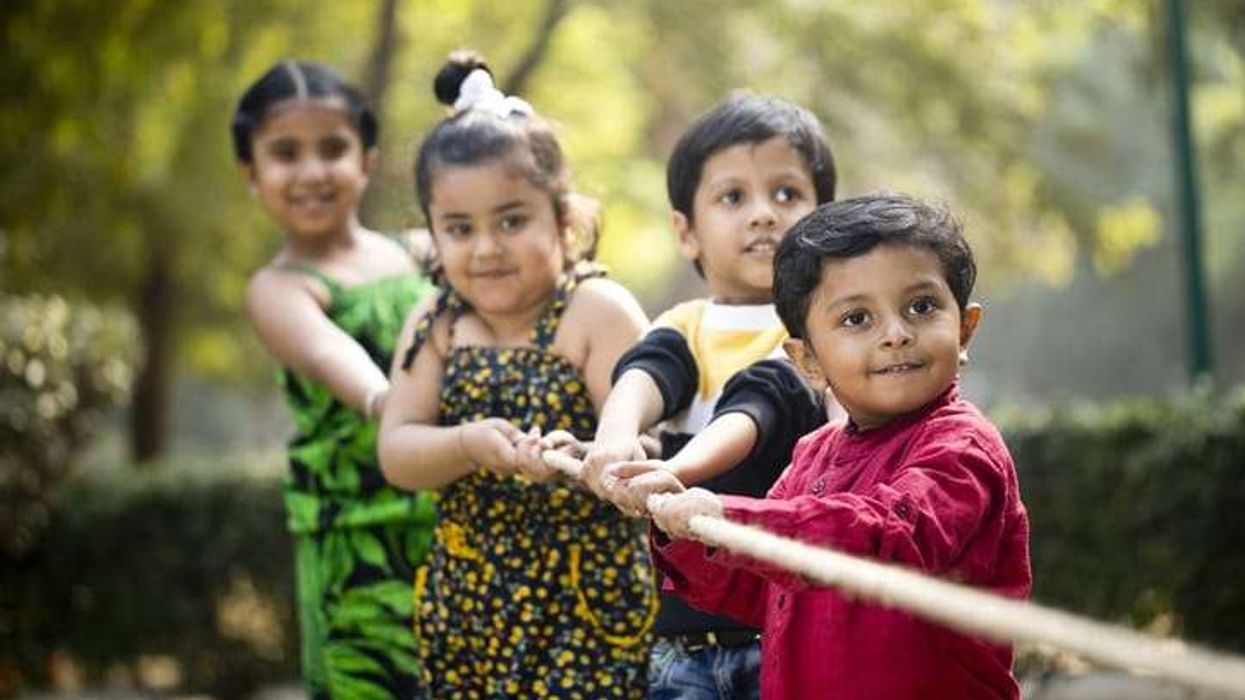HOW TALENTED ACTRESS ANUPRIA GOENKA ESTABLISHED HERSELF WITH NOTABLE ROLES IN FILMS AND WEB SHOWS
by MOHNISH SINGH
FROM Tiger Zinda Hai and Padmaavat to Criminal Justice and Aashram, Anupria Goenka has notched up a host of notable roles in films and streaming shows. She is fast becoming known for taking up character-driven projects notwithstanding the length of the part she is offered.
After portraying powerful characters on three successful streaming shows last year, Goenka next stars in Asur 2 and Aashram 2. The actress tells Eastern Eye that her wanting to be an actor was a very organic and yet very slow and confusing process. She also talked about things that she stills want to accomplish, being replaced at the last moment and her forthcoming projects.
How did you celebrate landing your first big role?
I don’t remember how I celebrated bagging my first big role, but I do remember that my father didn’t even realise I was working in Hyderabad as a lead in a project for a good six months of me being in there. I think I take all sorts of news in a calm and composed manner, good or bad. I remember once, with Nagesh Kukunoor; I always wanted to work with him and got a film as a lead with him, that too a crazy badass role. When he broke the news that I was selected as the lead in the film I was like, “ah okay”. He felt like I wasn’t happy! He said that there was no reaction and I was like, “No, no, I am extremely happy but I guess I don’t show it as much.” I do make it a point now to celebrate everything much more often than I used to before.
How did you spend your first acting paycheque?
I think I gave my first acting paycheque to my mother.
What is the greatest piece of advice someone ever gave you about honing your craft?
I think one was when Anurag (Kashyap) told me that I should really travel and explore myself, search my happy place, know what I really like and don’t like, as these kinds of things also affect you a lot of times, as an actor in your craft. Another advice came from Prakash Jha, where he discussed with me about how to do riyaaz every day, and in what format. We all know there is something called riyaaz and everybody has their own method. It’s very seldom that one tells you a very practical and beautiful way of doing it – that can actually be implemented in front of the camera too.
Do you remember when you decided that you wanted to be an actress?
I think, for me, wanting to be an actor was a very organic and yet a slow and confusing process. It took me two years to come to terms with the fact that I wanted to be a professional actor. It started with me wanting to do just theatre for creative satisfaction, and then when I realised that I need to earn money out of it as well to support myself and my family, I started doing commercial work. Over a period of time, the more I did the more I learned and that enticed me more towards the craft. So, yes, it took some time for me to realise acting is my true calling.
What are some things you still want to accomplish?
Oh, there are many things that I still want to accomplish. I want to be part of prolific and experiential projects. I want to learn many more skills. I want to do many different genres such as dark comedy, romcoms and even dark, psychotic roles. Period dramas and rural canvases have always fascinated me. So, there are many different kinds of roles I want to do and directors I want to work with such as Vishal Bhardwaj, Abhishek Chaubey, Anurag Kashyap, Zoya Akhtar and Dibakar Banerjee and many more.
What else do you want to do?
I want to do some international work as well to gain that experience. I want to learn many more things such as different forms of dancing, singing and pottery. I have recently just started horse-riding and pottery and now I have my eyes on archery. There’s no limit to what I want to do.
Have you ever been replaced in any project at the last moment?
Yes, I have been replaced but that’s okay. It does hurt at that point in time, but I think everyone has their reasons, and what is done is done for the betterment of the project and that’s part and parcel of the profession. It’s difficult being replaced at that time, but you learn to get over it and move on.
You were on three hugely successful streaming shows last year. But besides your own shows, what did you watch on OTT?
Lots of things! I watched Unorthodox, Hunters and The Affair on Netflix, and The Morning Show on Apple. Pataal Lok, Scam 1992 and Bombay Begums I watched recently, which I loved. Recently, I also watched Eeb Allay Ooo! Kaamyaab and Pagglait and I quite enjoyed watching them.
Apart from acting, what else are you passionate about?
I think that I am good with numbers. In my teens and early twenties, I was very hands on with investments and that was the need of the hour too. But now, I have become much more creatively inclined, so I don’t pay attention to it as much. But I am good with numbers and that is something that excites me too. However, I am bad with multitasking these days, so I can either be that or this. I am quite passionate about painting and horse-riding now and want to learn singing as well, as I said earlier. But you know, acting is such a beautiful craft that all of these skills and art forms kind of fuse in with acting, and that is why I love it so much.
What are some of your forthcoming projects?
There are Asur 2 and Aashram 2. There is a film and another show being discussed. However, everything is being delayed because of Covid-19, so that has been hard, especially with spike in cases every day. Things are even more uncertain now. I just hope that we get on the floors soon.
Instagram: @goenkaanupriya













